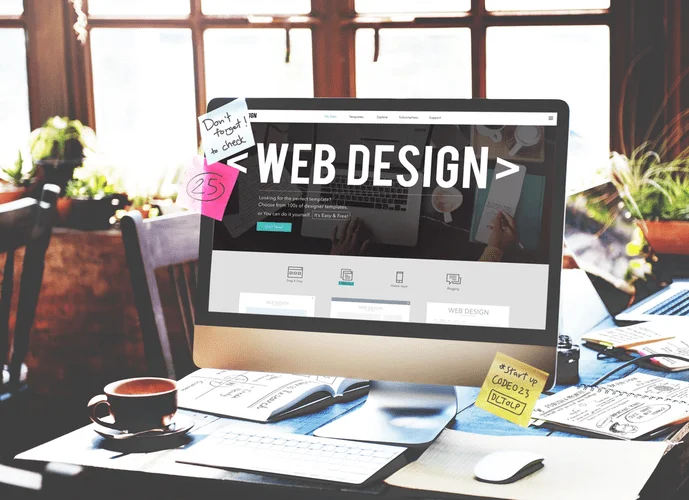But an initial POC can be as simple as a sketch on a napkin during a casual lunch conversation. Your goal should be to test the very idea of your product in the shortest amount of time possible — even if that means just having a conversation about it with someone you trust. Unless you’re Google, you probably don’t have such deep pockets to endlessly pursue ideas that may end up going nowhere . If that’s the case, an iterative build process isn’t just a conceptual philosophy; it’s a financial mandate.

They look like a real app or website, have the same content that will appear in the final design and are interactive. Lo-fi prototypes are generally used for testing functionality rather than visual design. During testing, the designer will simulate how a user will interact with the product through a prototyping kit or by manually shifting through sketches or wireframes.
What is the primary purpose of prototyping?
Wireframes let you focus on the functionality and content structure of the product. On top of that, your users will focus their feedback on functional problems, rather than visual preferences. This means you can ignore visuals, such as colors and fonts, in favor of polishing the core functions of the app.
Use Lego prototypes to mimic the actual size of a proposed physical product. This way, for example, you can test whether it fits into your jeans pocket. Paper prototypes are very obviously unfinished; therefore, users are unlikely to hold back their critiques for fear of hurting your feelings.
Benefits of Prototyping
The first physical model created along the product roadmap is the proof of concept prototype. ”, it is strictly concerned with function over form and will likely bear little if any resemblance to the final product. It’s vital to design for the process you are going to use for prototype and keep in mind how it will need to be eventually manufactured. For prototype a website the sake of clarity we’ve listed prototypes in succession; however, in some cases, prototypes may be developed anywhere along the product development timeline. It’s important to realize that developers design prototypes to match the manufacturing method, so depending on changes and differences it may be necessary to push forward prototypes concurrently.

Although the engineers and developers try their best to minimize the differences between the prototype and the actual product. But in general, a prototype may differ the actual product in terms of the material used, the machining process, appearance etc. Software prototypes may give test users a false impression of how good the finished article may be. “We’re trained by our education system to converge converge converge. The Creately Viewer will allow your users/ stakeholders to navigate through the linked pages and get a closer-to-real user-experience.
From Concept
Prototyping is an extremely valuable step in the design thinking process. Putting the user at the heart of the process requires you to test your designs on real users—and prototypes make this possible without spending loads of time and money. A prototype can be anything from a simple hand-made model to fully operational representation of how the conceptual design will look like and work in the real world conditions. With the development in the field of rapid prototyping, it is quite easy for the manufacturers to create a prototype in lesser time and to verify the design. This prototype helps to convince the customers and increasing the market of the product.
- Storyboards are another low-fidelity prototyping method that helps visualize the user’s experience in using your product or how the user would interact with your product.
- The manufacturing industry in North America expects to enjoy a global dominance through 2020 according to a study by Deloitte.
- Once the final tests have been run, viability assessed and a successful business case review made, it’s time to begin ramping up production.
- A visual prototype represents the shape, dimensions, and appearance of the conceptual design but is not intended to depict the functionality of the final product.
- A clickable wireframe not only represents the visual layout of a digital interface, but also offers a certain degree of interactivity.
This is the same whether designing a brand-new product or fine-tuning an existing one. In some instances a physical prototype may be preferable to a digital one, although advances in computer technology means that modern prototyping can be achieved without needing several physical iterations. Because prototypes are not fully-functional final versions there can be challenges. The greater the level of detail the easier it is to test, but this still requires you to take account of any compliance issues and undertake essential tests. You should also make sure you choose the correct prototyping process and try not to get side-tracked into wasting time on less important factors, such as aesthetics. It is also easy to end up spending too much time working on new prototype iterations, which can unnecessarily delay the creation of a final product.
The Waterfall model has traditionally been a popular one in software development, but is it right for your project?
Gain first-hand insights into how your users will interact with, and react to, the product you’re designing. Seeing an early version of the product in action shows you if, and how, it’ll work in the real world. Before releasing a product to market, you want to make sure that it works as intended. Ideally, you’ll find these things out before you spend time and money developing the final product. If you’ve been following our series of design thinking articles, you’ll know that there are five key steps in this process.

Often, coded prototypes are only used in later stages or by designers who know how to code. Prototyping allows designers to make sure their concept will work as they intended. Iteration based on the feedback gathered from real-life user testing is incredibly important to finding and resolving issues before a product is launched. Prototyping allows for testing before development for maximum efficiency throughout the building process.
CONTENTS
Start by brainstorming with your team to identify any obstacles that may delay or block your prototyping or product designing process. Having these identified prior to designing will allow you to take precautions. For example, if it is a mobile app, you can animate how a user would navigate from one screen to the other. This will help the stakeholders or users get an idea about the functionality of the product. Storyboards are another low-fidelity prototyping method that helps visualize the user’s experience in using your product or how the user would interact with your product. While it doesn’t take much time or effort to translate a broad concept to a low-fidelity prototype, it can be used to gather user feedback during the early stage.
It all depends on what you want to achieve with your prototype, as well as how complete your design is. Enables the designer to gain an overall view of the product using minimal time and effort, as opposed to focusing on the finer details over the course of slow, incremental changes. This prototyping technique allows you to study https://www.globalcloudteam.com/ the reaction of the user at a lesser cost. Using the Creately UI mockup tool, you can create navigable UI mockups by linking the different design elements to other UI mockups representing various pages of your website. Download our free ebook The Basics of User Experience Designto learn about core concepts of UX design.
Horizontal Prototypes
Prototyping is a useful tool to help a client visualise a product’s interactions before starting development, saving time, money and wasted efforts. Part of it is that the tools and techniques from the design world are only starting to arrive in government — often vianewly launched innovation officesthat are increasinglyhiring professional designerson staff. Then there’s the habit in government to rely on experts to craft programsforpeople rather thanwiththem.
